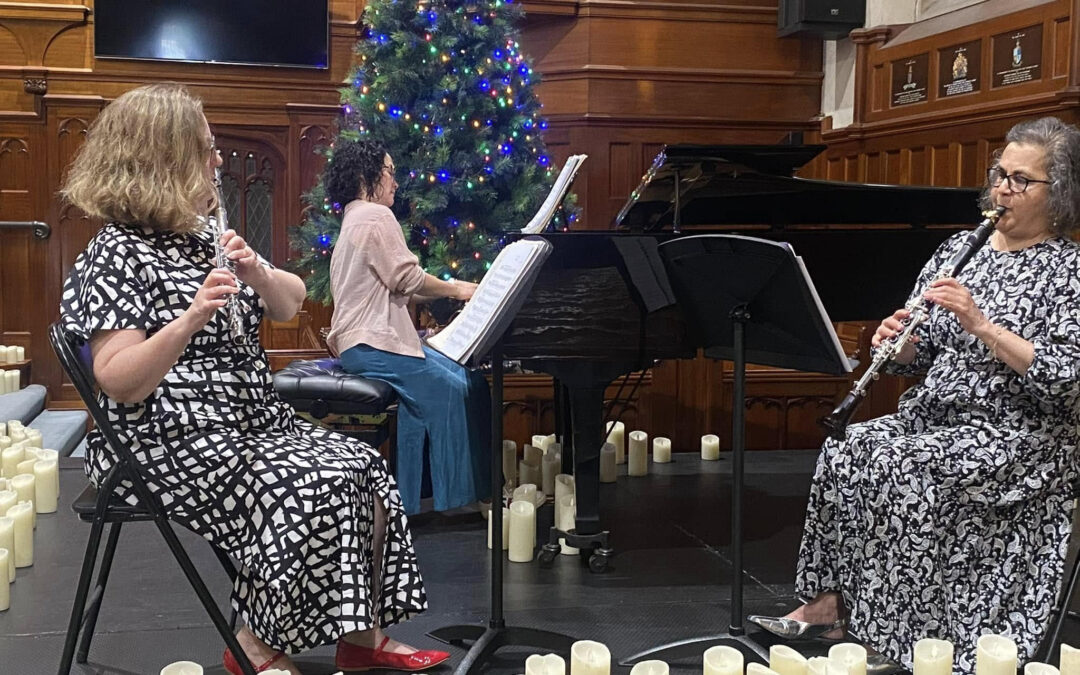A Viennese Bouquet: Music for flute and piano | Melissa Farrow and Erin Helyard
Featuring two well-known Australian exponents of period instruments, flautist Melissa Farrow and fortepianist Erin Helyard, playing modern reproductions of their respective instruments from the early 1800s, A Viennese Bouquet : Music for flute and piano essentially features works by composers associated with Vienna during the Classical Period, many who were contemporaries of WA Mozart, with one major exception, Leopoldine Blahetka, “one of the most important female musicians of the 19th century”. Her Introduction and Variations Op 39 was certainly a new discovery, a lively virtuosic work comparable to those of her male counterparts.
The informative sleeve notes state that the piano, violin, guitar, and flute were the most popular instruments for amateurs in early 19th century Vienna but, unlike the piano and violin, music for the guitar and flute were targeted towards an amateur market so largely played at home which meant it was less complex or virtuosic. The variation sets demonstrate compositions for the masses whereas the grand sonatas were more for virtuosos.
The disc begins with a well-known tune and composer, Beethoven’s The Last Rose of Summer (Air Ecossais), the fourth of the 6 National Airs with Variations Op 105, beautiful in its simplicity.
The slow movement from Kuhlau’s Grande Sonate pour le pianoforte et flute obligee Op 83 No 1, named Variations sur un ancien Air suedois, based on the Swedish folk song Sad Girl, is played with great poise and purpose.
Eberl’s Sonata pour le pianoforte avec une flute obligee in G minor Op 29 was his only work for flute and piano. The tone colours and sonority Farrow achieves with her replica of a 9-keyed flute by Wilhelm Liebel via “hundreds of fingerings” shine through in the inventive first movement, mellifluous slow movement with a series of developing variations, and playful final movement polonaise. It stands as one of only a few seriously constructed sonatas for flute and piano from the first decade of the 19th century.
Fellow Viennese, August Eberhard Mueller, a flautist himself, composed his Grande Sonate pour le pianoforte et flute Op 38 for advanced players. The first movement begins slowly and elegantly, then bursts into spirited passages for both instruments, evolving into a concerto-like expansiveness. A short Larghetto melanconico slow movement follows before the joyous final movement Presto in rondo form.
Fittingly, the disc finishes with a work by WA Mozart’s son Franz Xaver Wolfgang, Rondo in E minor for flute and piano FXWM VI:10, that features elements of both the Classical and Romantic periods.
The CD is a unique well-compiled collection of lesser known works, all for flute and piano, mostly by lesser known composers but highly recommended for its historically informed approach and quality performances. The complementing mellowness of the replica period flute and fortepiano and the balance achieved by the skilful playing of both musicians make for relaxed listening, pleasant to the ear, typical of music in early 19th century Vienna.





























